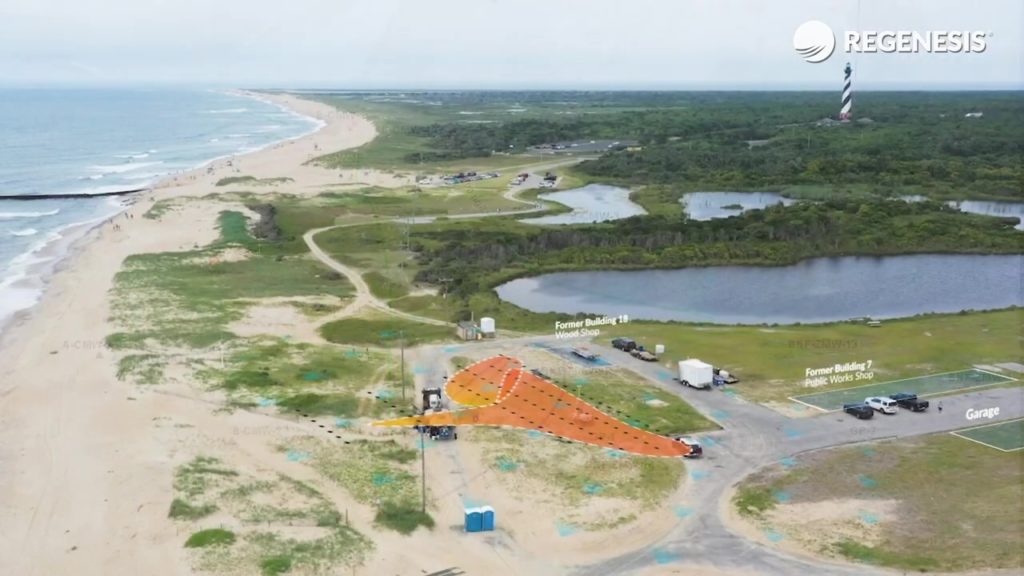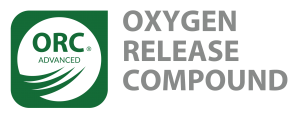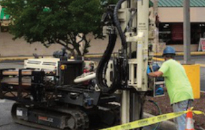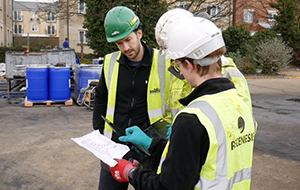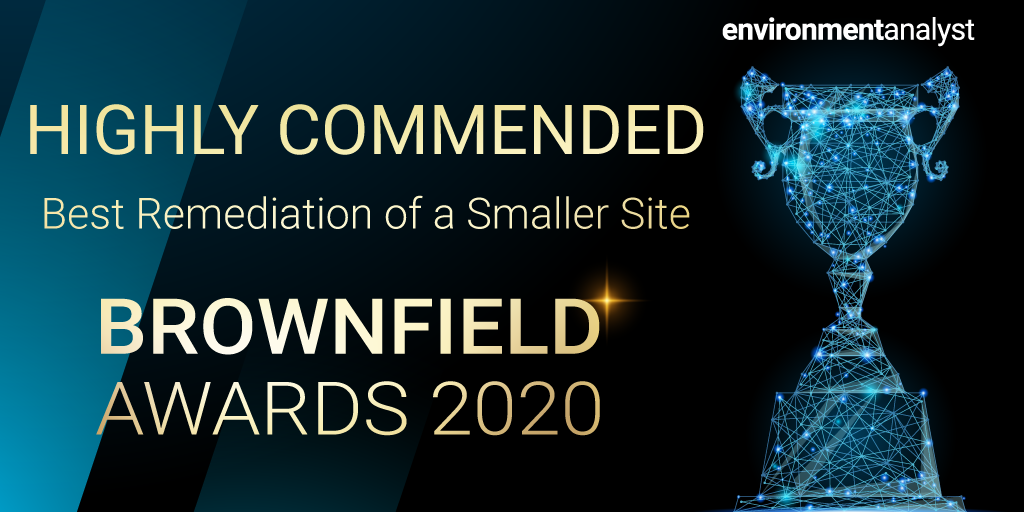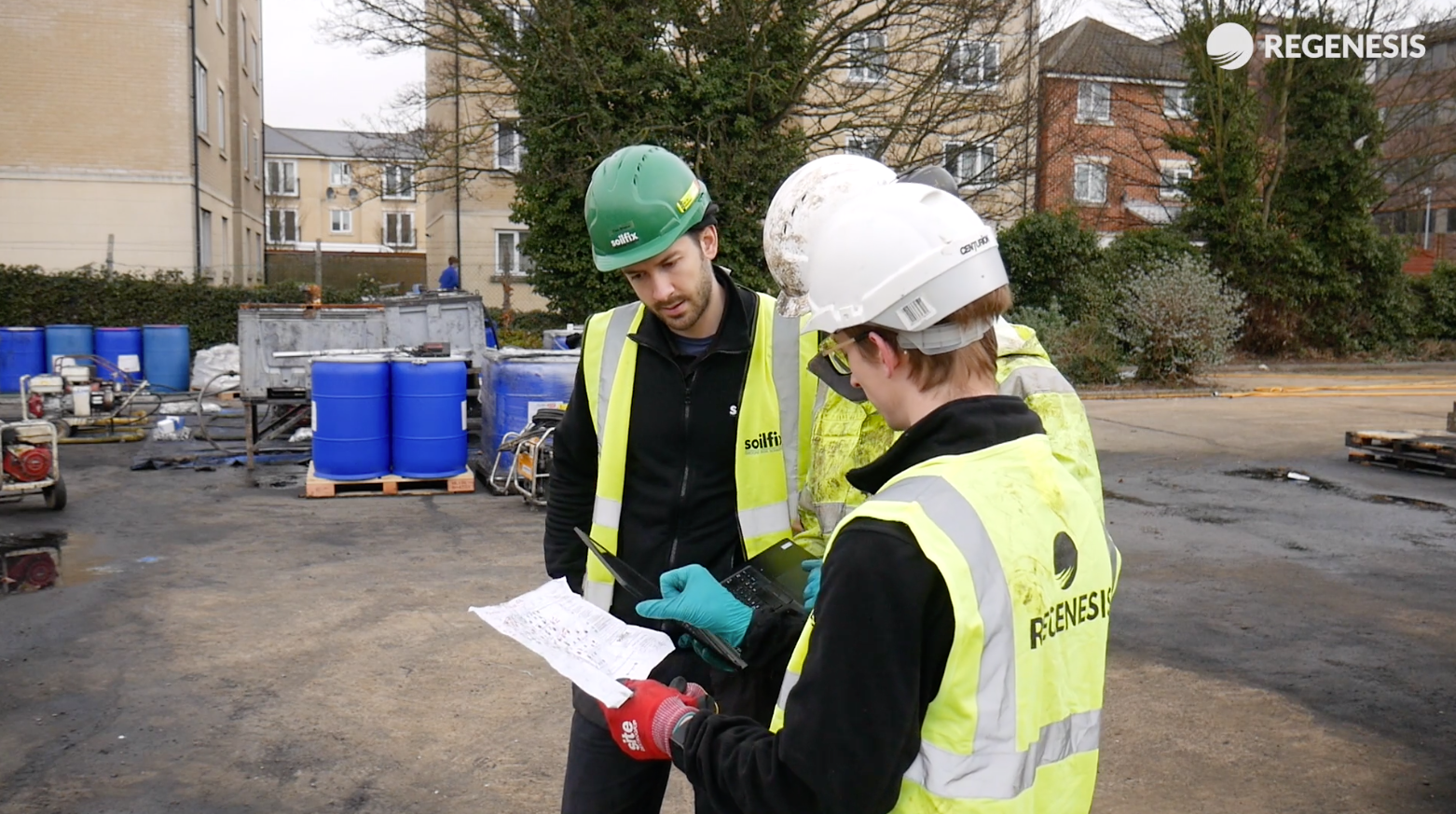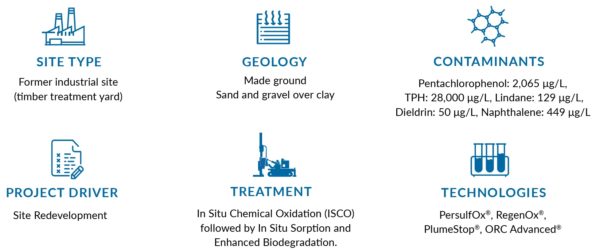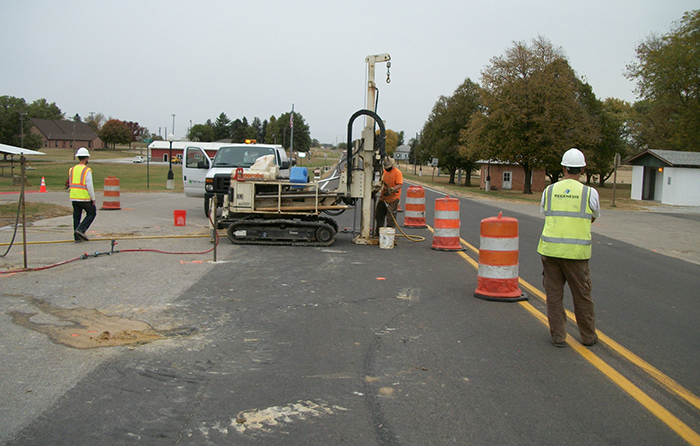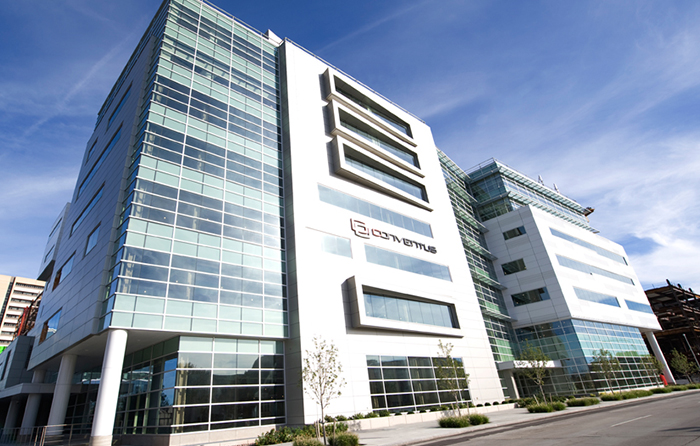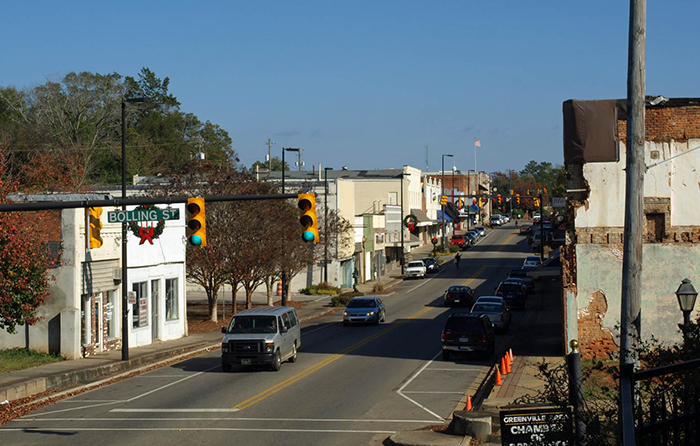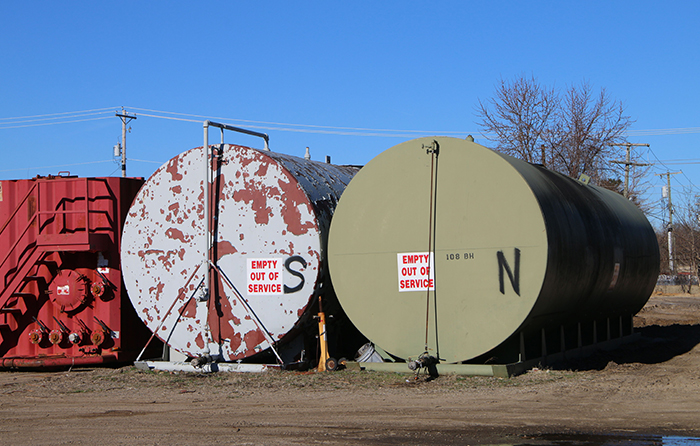Performance-Based Objectives Achieved at Scott AFB
This case study reviews the Corrective Action Plan (CAP) at Scott Air Force Base, a large military base located in Southwestern Illinois that was contaminated with petroleum impacted soil. One month following the application of PetroFix®, contaminant levels reached non-detect. Benzene continued to remain non-detect through March 2020 and the site was recommended for no further action.
The final CAP Addendum proposed two rounds of groundwater treatment by injection at Former Tank 85 to reduce benzene concentrations below the groundwater remediation objectives. The first round of injections was completed in February through March 2018 and consisted of the use of REGENESIS’ RegenOx®, coupled with ORC Advanced® to stimulate aerobic bioremediation. The initial injection was successful in reducing most contaminants within the affected area. The second round of injections at the former UST was completed in March 2019 using REGENESIS’ PetroFix micron-scale remedial fluid.

Case study highlights:
- Impacted soil was caused by leaking underground piping and removal of two large UST’s
- Second round of direct push injections included PetroFix to treat lingering BTEX
- One month following application of PetroFix, BTEX levels were at non-detect and have continued to remain at that level for 5 sampling events
5m 25s reading time
First Application of PetroFix at Petrol Filling Station in Sweden
Integrated groundwater treatment strategy using RegenOx, ORC-Advanced and PetroFix yields a 98% reduction in groundwater contaminant
concentrations
Introduction
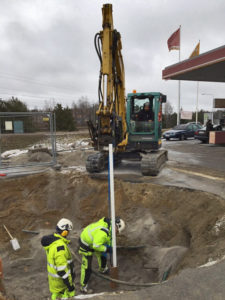
RGS Nordic was asked by Circle K to remediate groundwater contaminated with gasoline at an active Petrol Filling Station (PFS) in Nykvarn, Sweden. During the site investigation, petroleum hydrocarbon contamination was identified within the fill material around the underground storage tank (UST) farm.
RGS Nordic was required to deliver a remediation strategy that posed minimal disruption to the commercial operations of the PFS. The chosen remediation strategy combined targeted excavation, in situ chemical oxidation (ISCO), in situ sorption, and enhanced aerobic biodegradation using a range of complementary REGENESIS technologies: RegenOx®, ORC-Advanced® and PetroFix®.
Case Study Highlights
- The integrated remediation treatment strategy ensured that optimum treatment efficiency was maintained throughout the phases of works, resulting in:
- The amount of excavation and offsite disposal was minimised.
- All underground infrastructure remained in situ.
- All works were completed at an active petrol filling station with minimal disruption to the commercial operations of the facility.
- 12-month period monioring results show reductions of >98% of the gasoline range of petroleum hydrocarbon concentrations in the groundwater.
4m 32s reading time
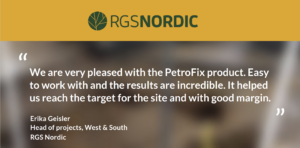
Remediation Products Applied
Please click on the logos below for more product information.
Performance-Based Objectives Achieved at Scott AFB
This case study reviews the Corrective Action Plan (CAP) at Scott Air Force Base, a large military base located in Southwestern Illinois that was contaminated with petroleum impacted soil. One month following the application of PetroFix®, contaminant levels reached non-detect. Benzene continued to remain non-detect through March 2020 and the site was recommended for no further action. The final CAP Addendum proposed two rounds of groundwater treatment by injection at Former Tank 85 to reduce benzene concentrations below the groundwater remediation objectives. The first round of injections was completed in February through March 2018 and consisted of the use of REGENESIS’ RegenOx®, coupled with ORC Advanced® to stimulate aerobic bioremediation. The initial injection was successful in reducing most contaminants within the affected area. The second round of injections at the former UST was completed in March 2019 using REGENESIS’ PetroFix micron-scale remedial fluid.

Case study highlights:
- Impacted soil was caused by leaking underground piping and removal of two large UST’s
- Second round of direct push injections included PetroFix to treat lingering BTEX
- One month following application of PetroFix, BTEX levels were at non-detect and have continued to remain at that level for 5 sampling events
5m 25s reading time
NFA Status Achieved at Virginia Gas Station Site
This case study reviews a former retail fueling center in Virginia where Sovereign Consulting was hired to demolish the site and remove a 25,000 gallon underground storage tank (UST) which was also the source of the LNAPL contamination. Working with the Virginia Department of Environmental Quality (VADEQ) Sovereign conducted a Site Characterization Assessment and following monitoring was then retained by their client to demolish the fueling center and remove the 25,000-gallon gasoline UST and the associated fueling system which represented the source of the contamination.
Once the source of contamination (UST) and the free-product was addressed, Sovereign worked with REGENESIS to formulate and execute a groundwater remediation plan that used PetroFix. Unlike other groundwater treatment materials, PetroFix was utilized due to its dual function – it quickly removes hydrocarbons from the dissolved phase by absorbing them onto the activated micro-carbon particles and the electron acceptors promote hydrocarbon biodegradation in situ to encourage continued remediation. This combination resulted in a rapid decreases in contamination in weeks as opposed to months as determined through monitoring well groundwater sampling and the corresponding concentration curves for each chemical of concern.
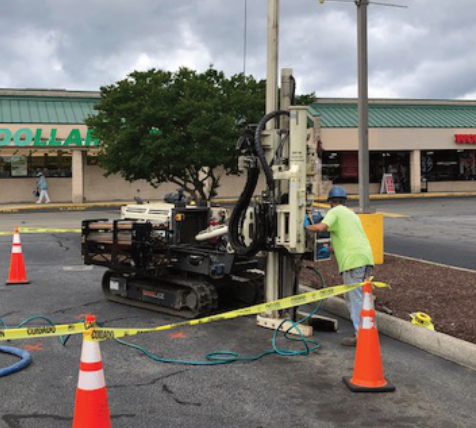
Case study highlights:
- PetroFix quickly reduced BTEX, Naphthalene, and THP-GRO Concentrations to reach site goals
- Pollution Complaint Case Closure granted by the VADEQ in less than one year post-application
- Single application of PetroFix addressed contaminants of concern to help site reach closure
5m 2s reading time
PFAS Contaminants Reduced to Non-Detect
This case study reviews a bulk storage facility located in the Middle East region that had released a mixed plume of petroleum hydrocarbons and Per and Polyfluoroalkyl substances (PFAS). PFAS constituents were effectively reduced to non-detect following the application of PlumeStop and have remained at these levels for twelve months post-application.Read More
Pesticides, VOCs and petroleum hydrocarbons remediated with a suite of in situ technologies
Shallow aquifer treatment using RegenOx, PersulfOx, ORC Advanced and PlumeStop at a former industrial site, UK
This project was Highly Commended in the Brownfield Awards 2020 in the category of ‘Best Remediation of a Smaller Site’.
Located in East Anglia, this industrial site had been occupied by a timber yard, incinerator, fuel storage tanks and a saw mill. These were later demolished and the site-use changed to light commerical and a car park for a FTSE 100 Company. It was decided that the site should be prepared for redevelopment and a due diligence site investigation was carried out by Ramboll to support lease surrender.
It was discovered that in a corner of the site, the soils and groundwater were impacted with a wide range of contaminants including petroleum hydrocarbons, volatile organic compounds (VOC’s) including BTEX, trimethylbenzene, pentachlorophenol and a mix of pesticides, including organochlorine pesticides (Dieldrin) and gamma-HCH (Lindane). Soilfix worked closely with Ramboll and REGENESIS to deliver a tailored multi-phase remediation solution for the site, including in situ remediation using a suite of REGENESIS’ remediation technologies.
REGENESIS services team carried out the groundwater remediation works on-site which included a combination of in situ chemical oxidation, sorption and enhanced biological degradation. Click the case study link to find out more, or watch the project video.
7m 3s reading time
“The project was a great success. Not only did we meet the betterment-based objectives that we agreed with the Client’s consultant Ramboll; for many of the contaminants we ended up meeting the stringent criteria that were originally derived by the risk assessment. This enabled the Client to surrender their lease on their programme. We felt this was largely down to the project team approach that we took with REGENESIS, from conception through to validation and completion of the project.”
Steve Jackson, Director, Soilfix
Case study highlights:
- Soilfix, Ramboll and REGENESIS worked together to develop a tailored multi-phase remediation solution.
- Integrated application of remediation products: RegenOx, PersulfOx, PlumeStop and ORC Advanced.
- Validation results show a rapid and sustained reduction in the concentration of all contaminants of concern (COCs).
- Remedial targets were achieved in time for lease surrender, with all stakeholders satisfied with the works completed.
Petroleum Hydrocarbon Plume Treated to Non-Detect within 50 Days
This case study reviews an active gas station in Nebraska that was adversely impacted by a dissolved‑phase, hydrocarbon plume. The treatment solution from REGENESIS was successful in reducing the concentrations of BTEX, TPH-G, and MTBE to non-detect levels. REGENESIS conducted a thorough and innovative DVT program prior to remediation in order to ensure an effective remedial design. They used the DVT to produce a design which fit the precise needs of the site as well as the client’s budget. After the successful treatment, the consultant continued to monitor the groundwater trends until the Nebraska Department of Environment and Energy (NDEE) granted the site closure status. The on-site gas station has remained open for business.
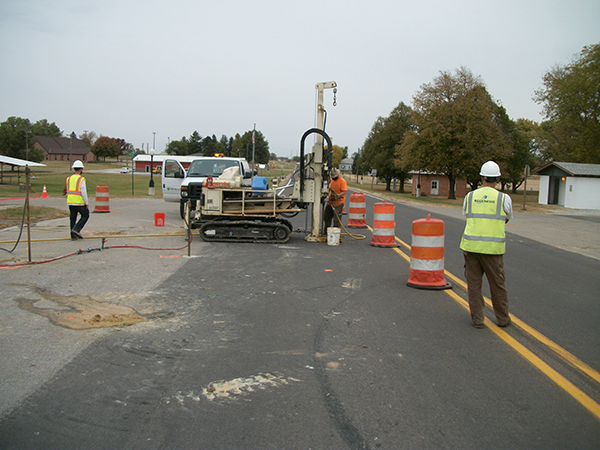
Case study highlights:
- Thorough Design Verification Testing (DVT) program helped to create a unique design for effectively treating the contaminant plume.
- Cost-effective design and application required a single application event.
- The remedial approach successfully treated a 200 ft. long dissolved phase hydrocarbon plume within the first 50 days.
6m 52s reading time
Excavation With RegenOx Successfully Treats Large PHC Plume
This case study reviews a former gas station site in Buffalo, New York that required remediation due to leaking underground storage tanks. Together with REGENESIS, C&S Consulting designed an in situ remediation strategy to target the residual contaminant plume. RegenOx® in situ chemical oxidant was chosen because of its ability to target petroleum hydrocarbons and its non-corrosive properties. As part of the New York State Department of Environmental Conservation (NYSDEC) Brownfield Cleanup Program, C&S designed a complex remediation program to ensure a quick and affordable solution. Petroleum contamination extended from 10 to 40 feet below grade. The site was excavated to 26 feet below ground surface to remove residual contamination and to enable equipment staging and material handling areas to support the deeper excavation area.
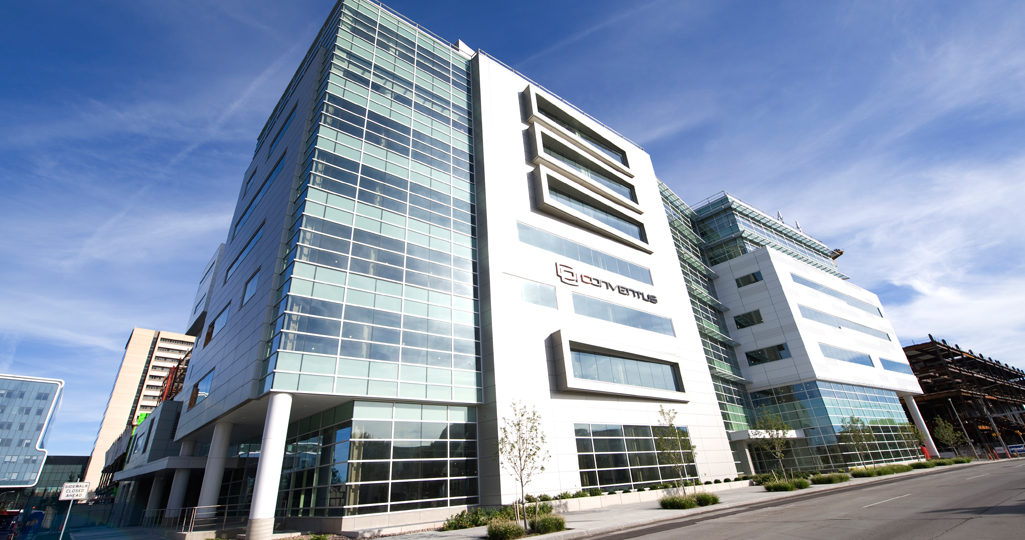
Case study highlights:
- After previous consultants attempted remediation without success, C&S created a remediation strategy that successfully reduced the plume.
- The combined remedy approach of excavation and ISCO exceeded the remediation goals.
- Successful remediation enabled the construction of a 350,000 sq. ft. $110 million facility at the Buffalo Niagara Medical Campus.
Innovative Approach Reduces Benzene To Achieve Closure
This case study reviews a gas station site in Greenville, Alabama where petroleum hydrocarbon contamination was present in the subsurface for decades. PersulfOx, PlumeStop, and ORC Advanced were applied to quickly reduce benzene levels to non-detect, resulting in successful regulatory closure. This site is part of an environmental liability transfer and Antea Group®, an international engineering and environmental consulting firm, assumed the liability for this site. Antea Group required an effective remedial solution that would result in rapid site closure. Antea Group partnered with REGENESIS® to create a remedial design using an in situ chemical oxidation (ISCO) treatment paired with an aerobic bioremediation technology to ensure a complete treatment of this site.

Case study highlights:
- Exceptional benzene reduction using PersfulOx quickly reduced contaminant levels within a short timeframe.
- Design Verification Testing (DVT) fine-tuned the application to increase effectiveness.
- Addition of PlumeStop application ensured against back diffusion to help reach site closure.
5m 16s reading time
PetroFix Pilot Study Leads to Full-Scale Application
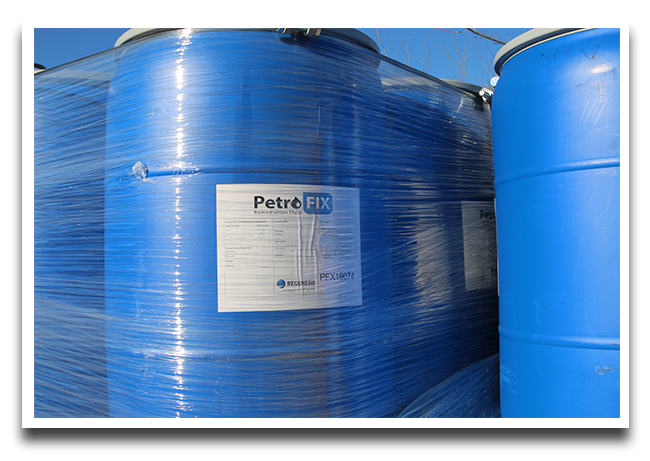 This case study reviews a former bulk petroleum storage facility where a groundbreaking application of PetroFix® Remediation Fluid, a micro-scale carbon suspension with soluble electron acceptors, is successfully treating petroleum hydrocarbons to IDEM standards.
This case study reviews a former bulk petroleum storage facility where a groundbreaking application of PetroFix® Remediation Fluid, a micro-scale carbon suspension with soluble electron acceptors, is successfully treating petroleum hydrocarbons to IDEM standards.
REGENESIS worked with Patriot Engineering and Environmental to develop a remediation solution using PetroFix, which is uniquely designed to address petroleum hydrocarbon contaminants.
The site was considered a viable candidate for the beta test, due to the high contaminant levels and provided a good test of the product’s performance at high concentrations. REGENESIS and Patriot agreed to move forward with the development of the beta test with the intention of evaluating its possible full-scale use following the results of the test. The promising results from the beta test and 12 months of post-injection monitoring indicate PetroFix to be a viable remedial option for this site.
This case study features the following:
- Beta test of PetroFix provided promising results leading to a full-scale application
- At just one month post-injection, the petroleum VOCs and gasolinerange organics were essentially eliminated from the groundwater and remain so at nine months
- PetroFix remedial solution is designed to remediate petroleum contamination completely at the lowest total cost to closure
- Collaborative remediation success between Patriot, Microbial Insights, and REGENESIS

 Americas
Americas Europe
Europe Français
Français Deutsch
Deutsch Italiano
Italiano Español
Español